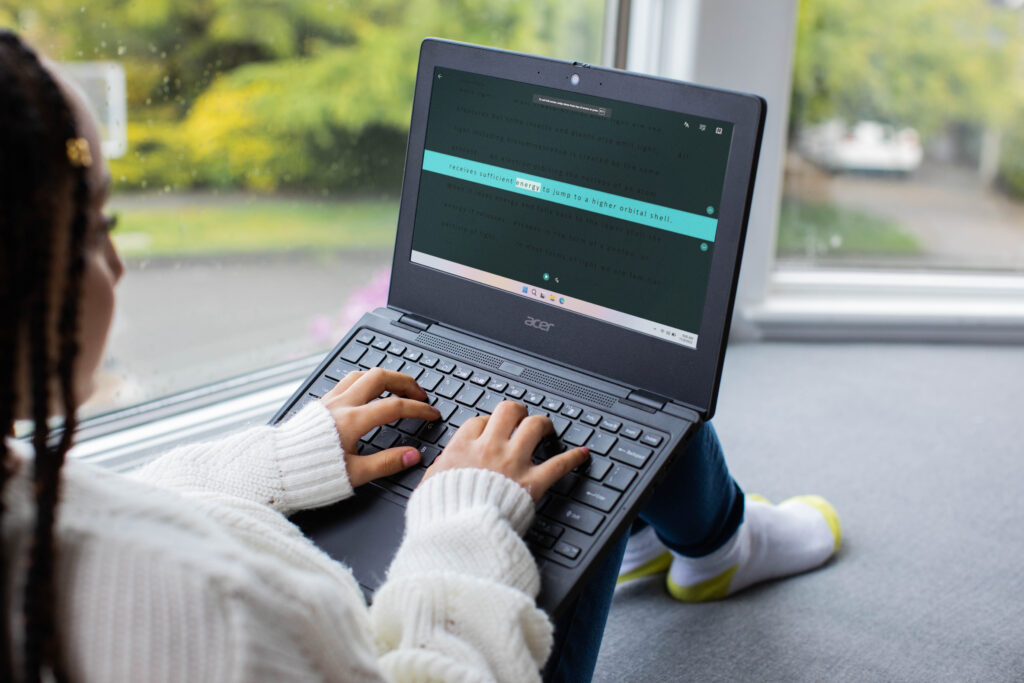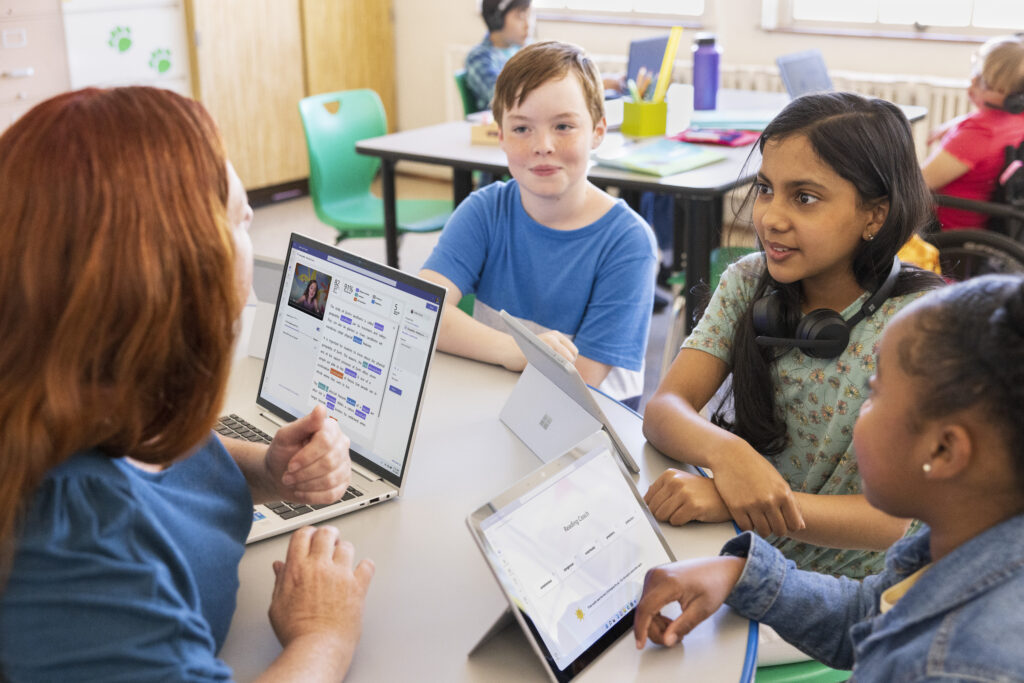Read Across America Day is so exciting and rewarding that it’s more than just a day: it is an entire week! It begins on March 2nd, which lands on a Saturday this year, giving you nearly a week to extol the virtues—and let’s be honest: the sheer enjoyment—of reading in your classroom.
Take five for reading!
Looking for ways to turn your students into grinning page-turners this Read Across America Week? How about five? Join Microsoft Education in celebrating Read Across America Day 2024!
1. Read books with or to students
Be a role model for literacy! You can create a designated story hour to highlight how important it is to take an imagination break every day. Whether it’s reading independently or sharing a story aloud with the entire class, reading regularly and consistently is a great way to make reading a habit—one that will help students academically while helping them to develop empathy and powerful imaginations. Use Read Across America’s free materials to promote inclusivity and community for all readers.

Reading a story aloud with the entire class is a great way to make reading a habit.
2. Discuss the history of reading and Read Across America
The National Education Association launched Read Across America in 1998 to celebrate reading and educate people about its benefits, especially among children and young adults. Cultures all around the world have been documenting their stories in writing for thousands of years, creating histories that can still be read today.
While there were periods of time when reading was a skill shared only among the wealthiest and most highly educated, today literacy rates have climbed all around the world. Reading has blossomed into a fun and empowering hobby that stokes the imagination and allows people of all ages to embrace new perspectives and new ideas.
3. Highlight reading links and connections
Reinforce that reading is not an isolated affair. What students read connects them to the world around them as well as the experiences they’ve had. Help them relate what they have read to other experiences in their lives or heritage months, such as Hispanic Heritage Month, Black History Month, Asian Pacific Islander Desi American Heritage Month, and Disability Pride Month.
4. Turn readers into reading evangelists
Start a school book club where kids can share their favorite stories or talk deeply about a book that they are all reading. Another terrific way to share the power of reading is with a free community library. Kids love stocking these libraries with books they’ve finished or books they think that others in their community might enjoy. It is also a wonderful ritual to visit your free library and see what literary treasures have been left by others!

A student using the Line Focus feature in Immersive Reader.
5. Use Microsoft’s literacy tools
Microsoft Education’s foundational reading fluency tools meet the literacy challenges of today’s educators and students. These solutions can help students learn, practice independently to become more fluent readers, and give writing and reading teachers the insights they need to provide individualized support. They also provide students with opportunities to practice these skills in non-stigmatizing ways, anytime, anywhere.
- Immersive Reader is designed to improve reading comprehension and fluency for all students. Available for free, Immersive Reader incorporates research principles that increase access and is loaded with features to help students read.
- Reading Coach provides personalized, engaging, consistent, and independent reading fluency practice by allowing learners to create unique AI-generated stories by choosing characters and settings from a curated collection of options. It’s now available for free as a public preview web app and a Windows application to use in the classroom or at home with a Microsoft account.
- Reading Progress simplifies the process of creating, reviewing, and analyzing reading assignments. With Reading Progress, students read a passage aloud while recording video and audio, then turn in their recordings to you.
- Education Insights ties these powerful tools together: automatically connecting with key apps to help streamline an educator’s decision-making process and identify students who need more practice.
Bonus idea: Create a cozy reading nook in your classroom
A cozy reading corner is the perfect place for students to grow essential literacy skills in comfort. Start off with seating that invites students to relax, like bean bags, cushions, or pillows. Next, add some lighting so it’s well-lit, and to warm up the atmosphere. Then place a bookshelf, bin, or basket in your corner to hold all your students’ favorite reads. Finally, top it off with inspirational décor—because today’s readers are tomorrow’s leaders!
Follow the reader

A teacher sitting at a table with a small group of students in a classroom.
To help your students develop foundational reading skills, Microsoft Learn has several engaging courses to help educators master free Microsoft tools that help students with their reading fluency. Head to Support reading fluency practice with Reading Progress and Introduction to Immersive Reader to get started.
Learn more and get additional information with these great resources!
- Building reading foundational skills: A guide to Reading Progress and Reading Coach in Teams for educators
- How to enhance reading instruction: a guide to Immersive Reader for educators
- Comprehensive quick start guides for Microsoft Education tools
- Stay ahead with 8 new updates from Microsoft Education
- Enhance literacy development with Reading Progress and Coach
Reading is for everyone, and there is a book for just about everything! Read Across America promotes reading to children and helps in developing a life-long habit. So, join Microsoft Education in celebrating the power and enjoyment of reading with Read Across America Day. Together, let’s highlight its critical role in boosting brain activity, increasing vocabulary and comprehensions skills, and increasing our awareness of and empathy for other perspectives, cultures, and experiences.







